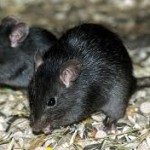Conservation
 Our conservation focus is to promote ecological restoration by facilitating technical assistance to those in the public and private sectors that are engaged in conservation. Our approach involves technical support in the conservation of protected areas that parallels efforts to address social and economic needs of the local communities.
Our conservation focus is to promote ecological restoration by facilitating technical assistance to those in the public and private sectors that are engaged in conservation. Our approach involves technical support in the conservation of protected areas that parallels efforts to address social and economic needs of the local communities.
 Ex situ conservation of amphibian species is being done in collaboration with Penn State University and the Philadelphia Zoo. Haiti has the highest percentage of threatened frogs in the world. Both cryogenic and captive breeding programs ensure that future populations of amphibians are available once conditions are secured to conserve their habitats in Haiti.
Ex situ conservation of amphibian species is being done in collaboration with Penn State University and the Philadelphia Zoo. Haiti has the highest percentage of threatened frogs in the world. Both cryogenic and captive breeding programs ensure that future populations of amphibians are available once conditions are secured to conserve their habitats in Haiti.
 Publication of Important Birds Areas (IBAs) and Key Biodiversity Areas (KBAs) serve as important studies to support the development of Haiti’s nascent country network of protected areas. Conservation activities in these areas among government and non-government organizations focus on land governance issues, democratic processes to mobilize efforts to conserve important habitats, educational approaches to develop environmental consciousness and sustainable land use activities that mitigate the negative impacts of agriculture, urbanization and resource extraction.
Publication of Important Birds Areas (IBAs) and Key Biodiversity Areas (KBAs) serve as important studies to support the development of Haiti’s nascent country network of protected areas. Conservation activities in these areas among government and non-government organizations focus on land governance issues, democratic processes to mobilize efforts to conserve important habitats, educational approaches to develop environmental consciousness and sustainable land use activities that mitigate the negative impacts of agriculture, urbanization and resource extraction.
 Control of invasive species is an area of conservation management that has received little attention in Haiti, yet is a major threat to native species, particularly those that occur in very restricted areas of the country. SAH is developing a strategy to target and
Control of invasive species is an area of conservation management that has received little attention in Haiti, yet is a major threat to native species, particularly those that occur in very restricted areas of the country. SAH is developing a strategy to target and  control a selection of introduced invasives, beginning with the main predators of threatened bird species.
control a selection of introduced invasives, beginning with the main predators of threatened bird species.
SAH continues to actively pursue media outlets by engaging world-renown photographers, journalists and publication of stories that highlight rescue efforts, little-known species and the science of biodiversity in Haiti. It is the hope that as the world begins to understand the vast wealth of life in Haiti that risks becoming extinct, the response will be an increase in wise investment of human resources and strategic assets to reverse the current trends.



